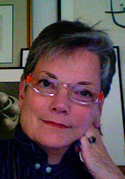 |
 | |||||||
San Francisco and Galveston: Disasters a Century Ago
|
 |
||||||
|
As Hurricane Katrina was tearing through Alabama, Mississippi and Louisiana there were many allusions by the media to the San Francisco earthquake of 1906. When Hurricane Rita was barreling across the Gulf towards Texas, gaining in strength and size, the precursor cited was the Galveston hurricane of 1900.
I decided to write a short history of both. For San Francisco we are fortunate to have photographs and writings from photographer Arnold Genthe, who took some of the quake's most famous photographs.
Genthe, born 1869 in Germany, taught himself photography after he emigrated to America in 1895. A classical scholar, his original intent was to be a tutor.
In the tenth chapter of his book, As I Remember (1936), he notes that he had been to the theater to see Enrico Caruso in Carmen. He felt the earth start shaking at little before 5:15 a.m. He went into the street and saw people milling about in nightgowns and evening wear hastily pulled on.
"Many ludicrous sights met the eye: an old lady carrying a large bird cage with four kittens inside, while the original occupant, the parrot, perched on her hand ... a man in an old-fashioned nightshirt and swallow tails, being startled when a friendly policeman spoke to him: 'Say, Mister, I guess you better put on some pants.' But there was no hysteria, no signs of real terror or despair."
He decided to go with friends to a restaurant that was still standing! Many other people had the same idea. "Near the entrance we saw Enrico Caruso with a fur coat over his pajamas, smoking a cigarette and muttering, ''Ell of a place! 'Ell of a place!'"
He continues, "After seeing my friends home, I went back to my studio to get a camera. The one thought uppermost in my mind was not to bring some of my possessions to a place of safety but to make photographs of the scenes I had been witnessing, the effects of the earthquake and the beginning of the conflagration that had started in various parts of the city. I found that my hand cameras had been so damaged by the falling plaster as to be rendered useless. I went to Montgomery Street to the shop of George Kahn, my dealer, and asked him to lend me a camera. 'Take anything you want. This place is going to burn up anyway.' I selected the best small camera, a 3A Kodak Special. I stuffed my pockets with films and started out. It was only then that I began to realize the extent of the disaster which had befallen the city ...
"The day of the earthquake, a committee of outstanding citizens met with the mayor and the military authorities and it was unanimously voted that the mayor be empowered to draw checks for any amount for the relief of the sufferers - the committee guaranteeing the payment. The relief measures were carried out with remarkable efficiency. All vehicles and foodstuffs were commandeered for the public good. No food was sold in the shops. Rich and poor had to stand in line at the relief stations to receive their daily rations ...
"Of the pictures I had made during the fire, there are several, I believe, that will be of lasting interest. There is particularly the one scene that I recorded the morning of the first day of the fire
The earthquake helped start a fire which was probably more damaging. Arnold Genthe lost his home/studio to the flames. He ends his story:
"I know from my own experience that it was many weeks before I could feel sure that my mind reacted and functioned in a normal manner. If I had shown any sense, I might easily have saved some of the things I valued most - family papers, letters and photographs of my parents and brothers, books written by my closest relatives, and of course my more important negatives, which I could have carried away in a suitcase. As it was, practically everything I possessed had gone up in smoke."
Earlier, in September 1900, a devastating hurricane hit Galveston, Texas. In the days before weather reports, it came largely as a surprise to the inhabitants of the city on a sandbar. Numbers vary, but it is thought that over 6,000 died in the storm and its aftermath. Possibly like the storm surges of Katrina and Rita, many were swept away.
NOAA tells part of the story about the storm and forecaster Isaac Cline, who lost his wife to the hurricane, on their Web site:
"Since wireless ship-to-shore communication was not yet available in 1900, information was extremely sketchy and there was little if any knowledge that the hurricane was strengthening and heading toward Texas. As the storm neared the Texas coast, Cline became increasingly suspicious of the weather. Convinced that a major storm was pending, he decided to raise the hurricane warning flags atop the Weather Bureau building on Sept. 7th, the day before the hurricane struck. Throughout the 7th and the morning of Sept. 8th, Cline continued to patrol the beach, warning people to move to higher ground. With a population of more than 35,000 people, it is likely many more Galveston residents would have died without the warnings. In what would be the last message to reach the outside world, Cline said, 'Gulf rising rapidly; half the city now under water.'"
Photographers went out after the storm and recorded what was left of the city. Although the city was raised on pilings and sand and the sea wall was built up from its 8.7' level, a large storm surge could again engulf the city.
© Marianne Fulton
Dispatches Editor
Dispatches are brought to you by Canon. Send Canon a message of thanks. |
|||||||
Back to October 2005 Contents
|
|


